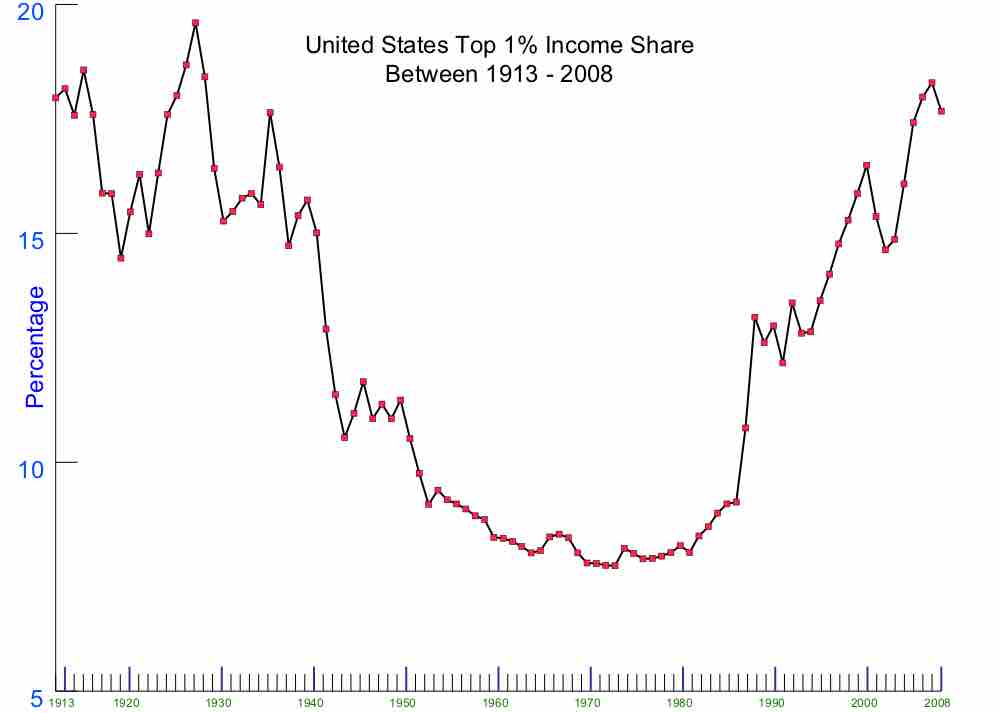Global stratification refers to the hierarchical arrangement of individuals and groups in societies around the world.
Global inequality refers to the unequal distribution of resources among individuals and groups based on their position in the social hierarchy. Classic sociologist Max Weber analyzed three dimensions of stratification: class, status, and party. Modern sociologists, however, generally speak of stratification in terms of socioeconomic status (SES). A person's SES is usually determined by their income, occupational prestige, wealth, and educational attainment, though other variables are sometimes considered.
Stratification and Inequality
Stratification refers to the range of social classes that result from variations in socioeconomic status. Significantly, because SES measures a range of variables, it does not merely measure economic inequality. For example, despite earning equal salaries, two persons may have differences in power, property, and prestige. These three indicators can indicate someone's social position; however, they are not always consistent.
Inequality occurs when a person's position in the social hierarchy is tied to different access to resources, and it largely depends on differences in wealth . For example, a wealthy person may receive higher quality medical care than a poor person, have greater access to nutritional foods, and be able to attend higher caliber schools. Material resources are not distributed equally to people of all economic statuses.

US Wealth Held by Top 1% of Population (1913-2008)
This graph illustrates the percentage of all US wealth held by the top 1% of the population. This percentage has shifted over time, but has consistently been a significant portion of total US wealth, indicating that wealth is not equally distributed between all US citizens.
While stratification is most commonly associated with socioeconomic status, society is also stratified by statuses such as race and gender. Together with SES, these shape the unequal distribution of resources, opportunities, and privileges among individuals. For example, within a given social class, women are less likely to receive job promotions than men. Similarly, within American cities with heavily racially-segregated neighborhoods, racial minorities are less likely to have access to high quality schools than white people.
Perspectives Towards Stratification
Stratification is generally analyzed from three different perspectives: micro, meso, and macro. Micro-level analysis focuses on how prestige and personal influence create inequality through face-to-face and small group interactions. Meso-level analysis focuses on how connections to organizations and institutions produce inequality. Macro-level analysis considers the role of economic systems in shaping individuals' resources and opportunities.
Macro-level analyses of stratification can include global analyses of how positions in the international economic system shape access to resources and opportunities. For example, the small African nation of Cape Verde is significantly indebted to European nations and the U.S., and the majority of its industry is controlled by foreign investors. As the nation's economy has ceded control of once-public services, such as electricity, its citizens have lost jobs and the price of electricity has increased. Thus, the nation's position in the world economy has resulted in poverty for many of its citizens.
A global structure, or a macro-level phenomenon, produces unequal distribution of resources for people living in various nations.
Theories of Macro-Level Inequality
There are three dominant theories that sociologists use to consider why inequality exists on a global scale .
Firstly, some sociologists use a theory of development and modernization to argue that poor nations remain poor because they hold onto traditional attitudes and beliefs, technologies and institutions, such as traditional economic systems and forms of government. Modernists believe large economic growth is the key to reducing poverty in poor countries.
Secondly, dependency theory blames colonialism and neocolonialism (continuing economic dependence on former colonial countries) for global poverty. Countries have developed at an uneven rate because wealthy countries have exploited poor countries in the past and today through foreign debt and transnational corporations (TNCs). According to dependency theory, wealthy countries would not be as rich as they are today if they did not have these materials, and the key to reversing inequality is to relieve former colonies of their debts so that they can benefit from their own industry and resources.
Lastly, world systems theory suggests that all countries are divided into a three-tier hierarchy based on their relationship to the global economy, and that a country's position in this hierarchy determines its own economic development.
According to world systems theory as articulated by sociologist Immanuel Wallerstein, core countries are at the top of the global hierarchy as they can extract material resources and labor from less developed countries. These core countries own most of the world's capital and technology, and have great control over world trade and economic agreements. Semiperipheral countries generally provide labor and materials to core countries, which benefits core countries but also increases income within the semiperipheral country. Peripheral countries are generally indebted to wealthy nations, and their land and populations are often exploited for the gain of other countries.
Because of this hierarchy, individuals living in core countries generally have higher standards of living than those in semiperipheral or peripheral countries.